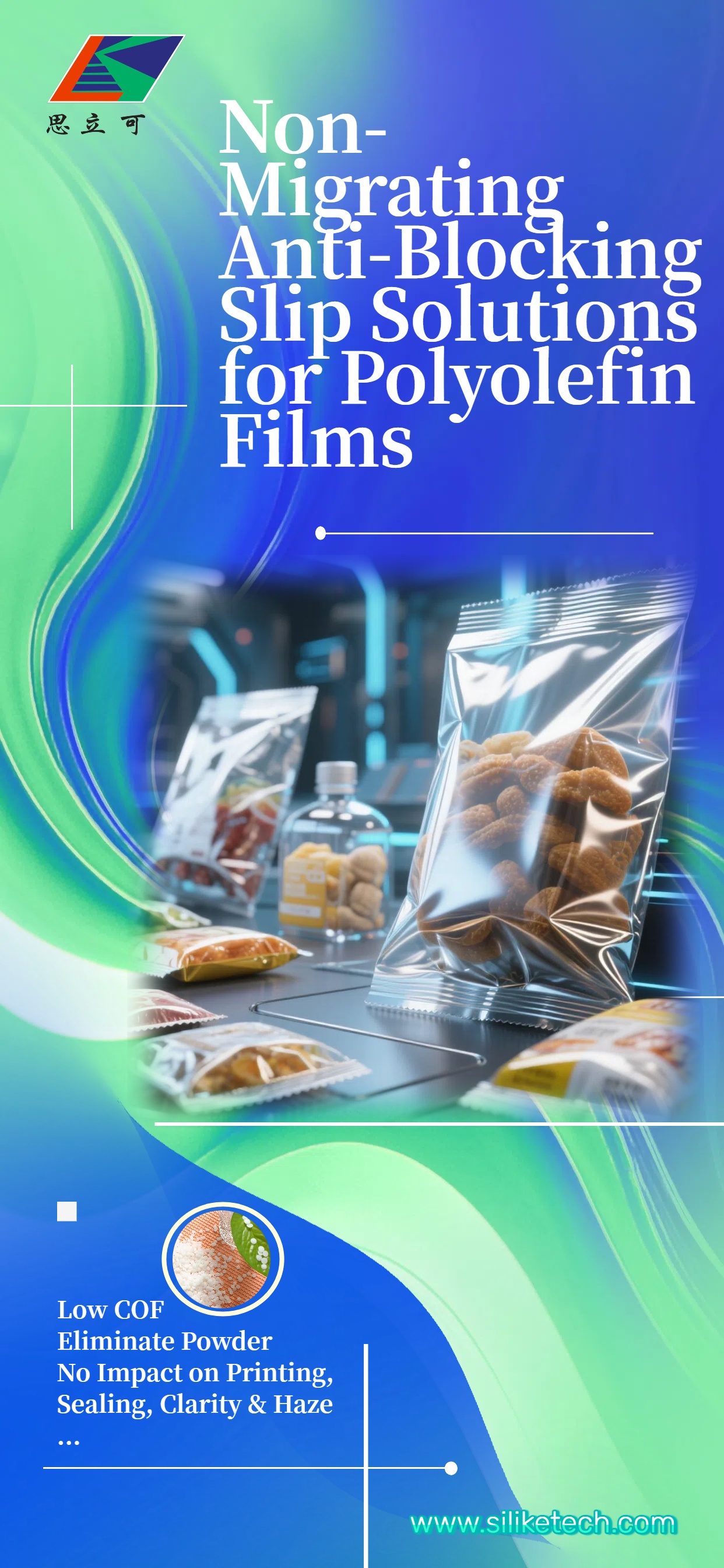Plastic films often face inherent tackiness that complicates manufacturing, converting, and end-use applications. This natural property leads to processing difficulties, which hinder efficiency. Slip additives have emerged as a vital component in addressing these challenges, optimizing film production, and improving functionality. This article delves into the science of slip additives and offers practical solutions for optimizing Polyolefin film production.
Understanding Slip Additives: What Are They and How Do They Work?
Slip additives are specialized compounds integrated into plastic films to reduce the coefficient of friction (COF), making processing smoother and more efficient. The COF reduction is critical for preventing issues like film jamming, ease of handling, and enhanced machine performance. Here’s a breakdown of slip additive types and their key benefits:
Low Slip: COF 0.50–0.80 (200–400 ppm slip content)
Medium Slip: COF 0.20–0.40 (500–600 ppm slip content)
High Slip: COF 0.05–0.20 (700–1000 ppm slip content)
How Slip Additives Work: The Science Behind the Solution
Slip additives function through two primary mechanisms:
Migration-Based Mechanism: Initially dispersed throughout the polymer matrix, slip additives migrate to the surface of the film as it cools. This migration forms a lubricating layer that reduces friction, improving film performance.
Surface Orientation: As the slip molecules reach the film surface, they align in a specific orientation. For instance, fatty amides arrange themselves with hydrocarbon chains embedded in the polymer, while amide groups face outward. This structure reduces surface friction and facilitates smoother processing.
Migration Kinetics and Performance Over Time
Slip additives exhibit time-dependent behavior, meaning the COF reduction evolves over time:
Phase 1 (0-24 hours): Rapid migration with a significant COF reduction.
Phase 2 (24-72 hours): Moderate migration continues, offering steady COF reduction.
Phase 3 (3-10 days): Equilibrium is reached with stabilized COF.
Understanding these phases is critical for quality control and production scheduling.
Types of Slip Additives: Choosing the Best Fit for Your Application
Different types of slip additives offer varying performance characteristics. The choice of additive depends on the specific processing needs and desired outcomes:
Migratory Slip Additives: Fast migration, cost-effective, ideal for lower-temperature processing. Examples: Oleamide, stearamide.
Non-Migratory Slip Additives: Permanent slip performance, suited for high-temperature processing. Examples: Silicone-based additives, fluoropolymer-based additives.
Fatty Acid Amides: Widely used for polyolefin films, offering excellent COF reduction without compromising optical clarity.
Innovative Non-Migrating Solution: SILIKE’s SILIMER Series — Super Slip Anti-Blocking Masterbatch
Traditional slip additives often face challenges such as migration or precipitation, affecting long-term performance. SILIKE’s SILIMER Series Multi-functional Process Aids solve these issues, providing non-migrating slip solutions that deliver superior results even under extreme conditions.
What Makes SILIKE’s SILIMER Series Anti-Blocking Slip Masterbatch Unique?
SILIKE’s SILIMER Series Super Slip and Anti-Blocking Masterbatch features a specially modified silicone polymer. It also demonstrates excellent compatibility with the matrix resin, maintaining stability throughout the production process. This eliminates issues related to migration and ensures lasting performance. The key benefits include:
1. Reduced COF: Both dynamic and static friction are significantly lowered.
2. Enhanced Anti-Blocking:Improves lubrication, ensuring smoother processing.
3. Compatibility with PP and PE Films: Maintains excellent compatibility with matrix resins, preventing precipitation and stickiness.
4. No Impact on Film Quality: Safe for printing, heat sealing, transmittance, or haze.
Ideal for manufacturers seeking reliable, long-term performance in flexible packaging, SILIKE’s SILIMER Series is the go-to solution for superior film production.
Solve Your Film Processing Challenges caused by traditional slip additives—such as white powder precipitation, migration, or inadequate film performance. As a trusted
plastic film additives manufacturer, we provide non-migrating slip and anti-block additives to enhance your polyolefin film production process and deliver superior results.
Contact SILIKE to find the ideal additives for your specific requirements, Via Email at amy.wang@silike.cn
Post time: Jun-06-2025






